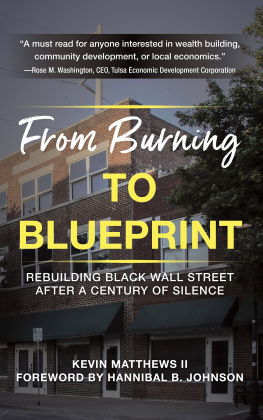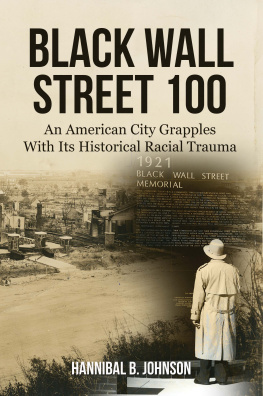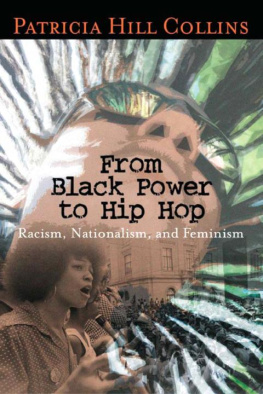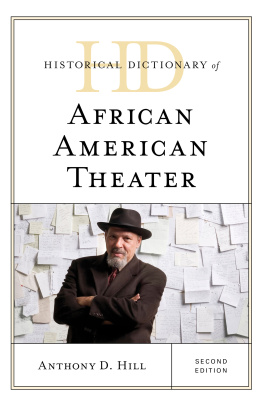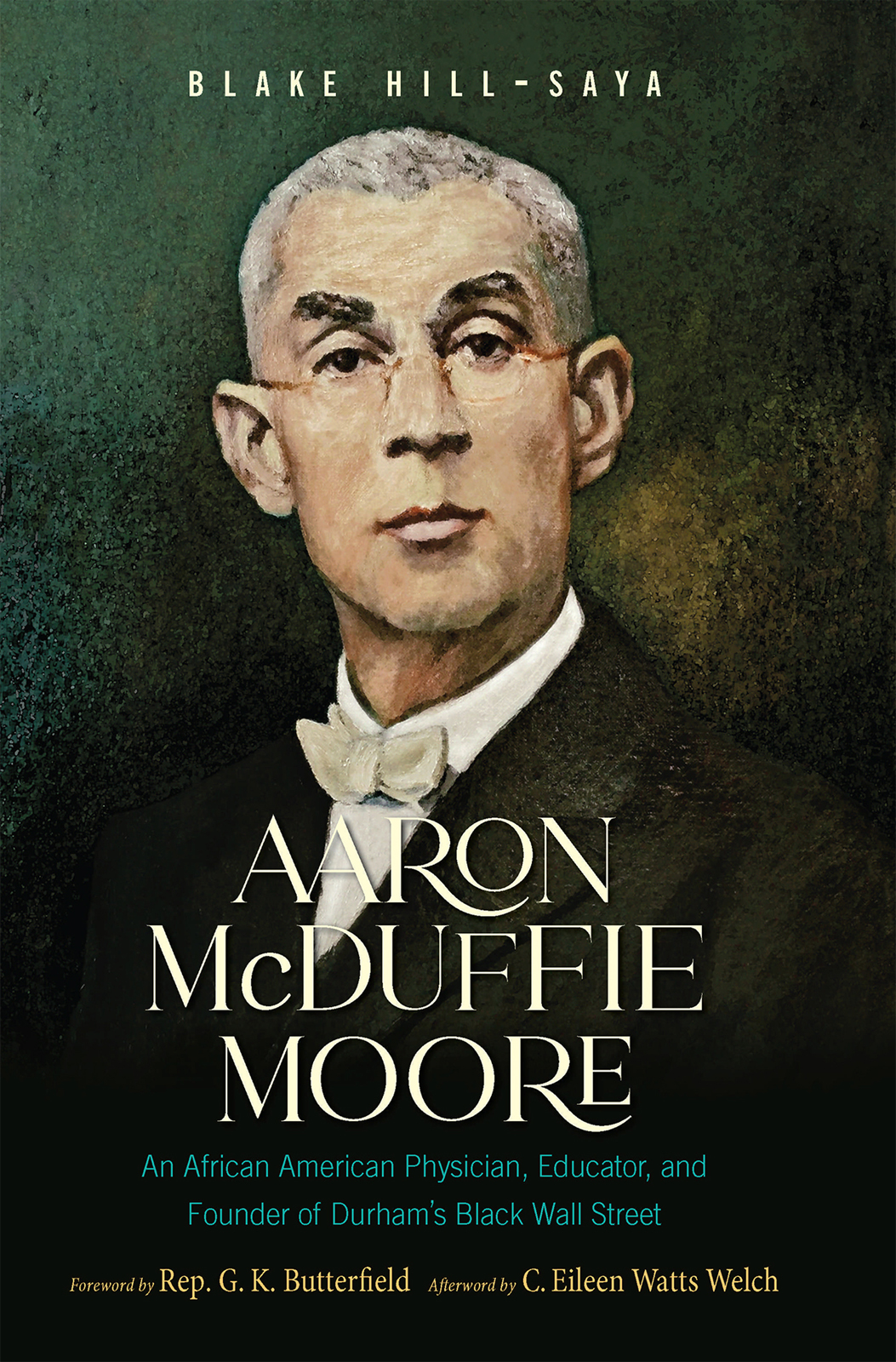FOREWORD
My relationship with Durham, North Carolina, spans many years, as an undergraduate and law student at North Carolina Central University and now as Durhams representative in the U.S. House of Representatives. Over these decades, I have embraced Durhams rich history. I especially enjoy the stories of those who transformed this outpost into a national leader in so many fields. For years, one name surfaced from podiums and pulpits, living rooms and community events, a name spoken with tremendous love and respect: Aaron McDuffie Moore.
As a student of history, I wanted to know more about this luminary. The more I learned, the more I found that Aaron and I shared identical priorities, including access to health care, educational opportunity, and economic empowerment. Where do you begin in describing a man who founded the states first independent black hospital and nursing school, a library, a bank, an insurance company, a pharmacy, and, believe it or not, a Shakespeare societyand who kept a closet full of shoes to give to children too ashamed to come to Sunday school without them?
A persistent campaigner for broader educational opportunities for black children, Aaron cooperated with Booker T. Washington in persuading Julius Rosenwald to construct eight hundred rural Rosenwald Schools in North Carolina, most of which were in my congressional district. This book describes the contributions of Aaron and his Durham contemporaries during an often-overlooked period in North Carolinas history.
His accomplishments were local, statewide, and national in scope, but they began and ended with the welfare of individuals. A 2016 program sponsored by the North Carolina Governors Office said Aaron Moore almost single-handedly built one of the most prosperous black communities in the nation and called him a visionary ahead of his time with a strong commitment to helping others. All this from a humble, hard-working farm boy, grounded in faith and family.
Where do you begin? I wondered. Indeed, where do you stop? Aarons accomplishments placed Durham alongside cities such as Tulsa, Oklahoma; Oberlin, Ohio; and Washington, D.C. as a beacon of black hope during the often-overlooked post-Reconstruction era of entrepreneurship, self-sufficiency, and civic progress by the newly emancipated. A man of tireless energy, relentless curiosity, and eternal optimism, Aaron Moore was not only Durhams first black physician but also Durhams own Renaissance man.
Aaron McDuffie Moore remains an icon in the Durham community. His is a story that goes beyond race. Although a commitment to his people was at the heart of every endeavor, that focus was never at the expense of others. He helped his neighborsboth black and whiteunderstand each other and work together.
Aarons inspiring narrative deserves to be told, and I am grateful to his great-great-granddaughter Blake Hill-Saya for telling it so well and giving us a glimpse into Aarons humor, enthusiasm, impatience, and heartbreak. I am equally grateful to his great-granddaughter C. Eileen Watts Welch, who continues working to sustain the nonprofit Durham Colored Library, Inc., which Aaron Moore founded almost 100 years ago. The DCL board shared in her vision through its support of this book.
Get to know Aaron for yourself through the pages that follow. You will be richer through his acquaintance.
G. K. Butterfield
AUTHORS NOTE
Writing this biography of my great-great-grandfather Aaron McDuffie Moore has been my dream since I was a teenager. I was well into adulthood, however, before I realized the larger impact of being his descendant. I, who have kept a journal from the time I was nine, started wondering what it would be like to enter the similarly intimate, everyday world of my ancestors. I wondered not just about their more widely known accomplishments but also about the minutiae of their everyday lives and their inner monologues. I began hoarding photographs and collecting letters, books, and personal items, such as a pair of gloves and a few china cups. Anything I could find on the subject of my mothers family transported me and held the thrill of discovery. To this day I have a recurring dream that I stumble across some secret door to a new wing or room in my grandparents houseit feels like discovering a shipwreck or the tomb of an ancient pharaohand suddenly all of my family mysteries are revealed to me.
Beautiful houses, such as the Moore residence at 606 Fayetteville Streethomes that were destroyed in Durhams Urban Renewal Projecthaunt my imagination the most. Their era seems a lost world, a kind of Atlantis. Durhams Hayti neighborhood of 19001960 is a world that remains physically only in small part. It lives best in the memories of the families who resided there and in the surviving institutions.
As a biracial child, a classical musician, and a lifelong student of history and the humanities, I have often felt that I was born to be a bridgebetween families, between the black and white racial experiences, between the stage and the audience, and now, I hope, between the voices of my ancestors and the hearts of my readers. I find that the more I work to bring Dr. Aaron McDuffie Moores life into focus, the more my desire becomes simply to sit and visit with my great-great-grandfather. During my research, I have met many others who have encountered his story in their own work and have voiced that same desire: to know Aaron Moore better, to spend time with him, to better understand his world.



